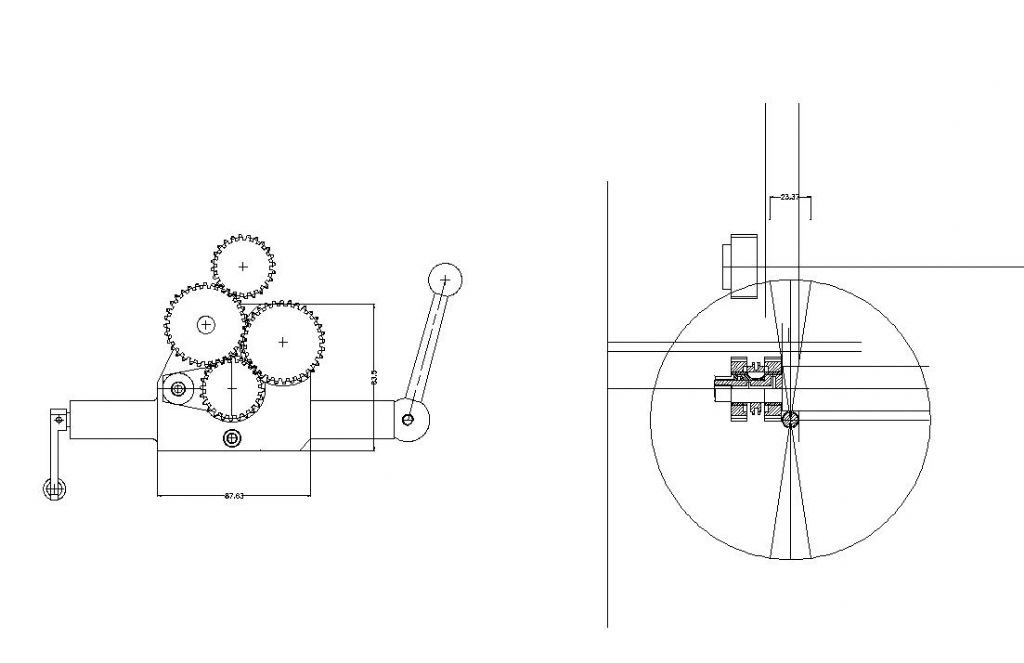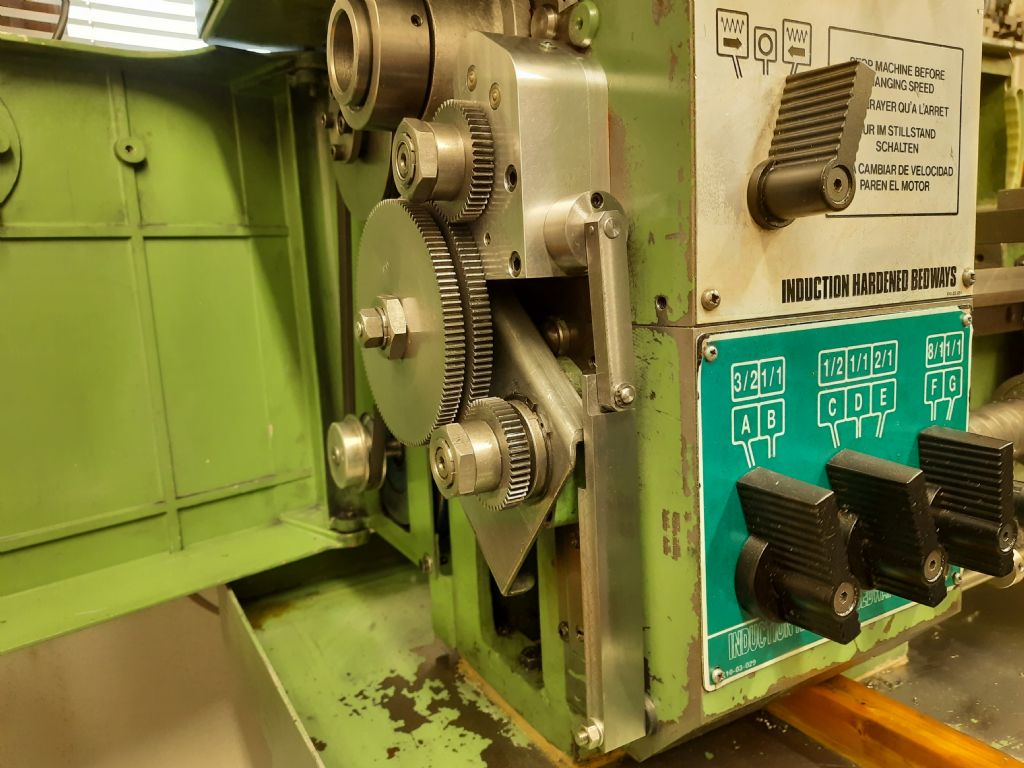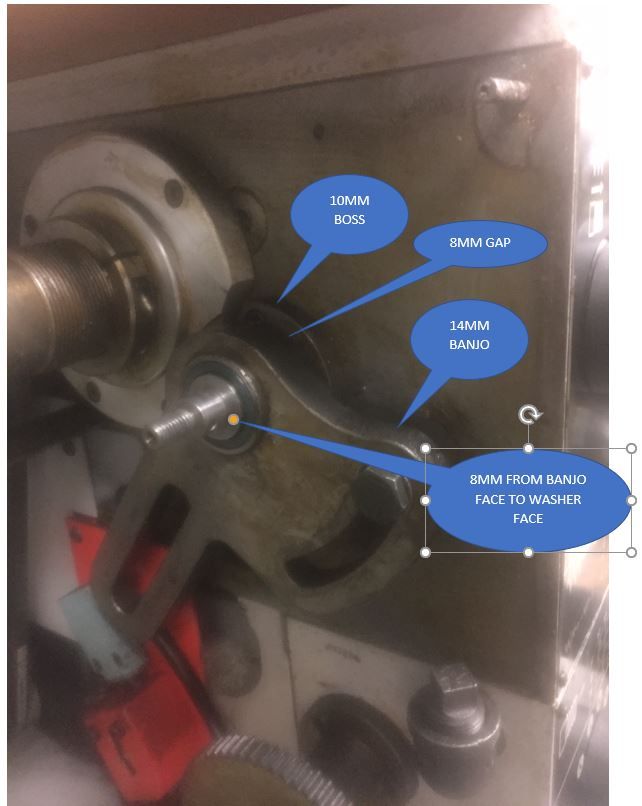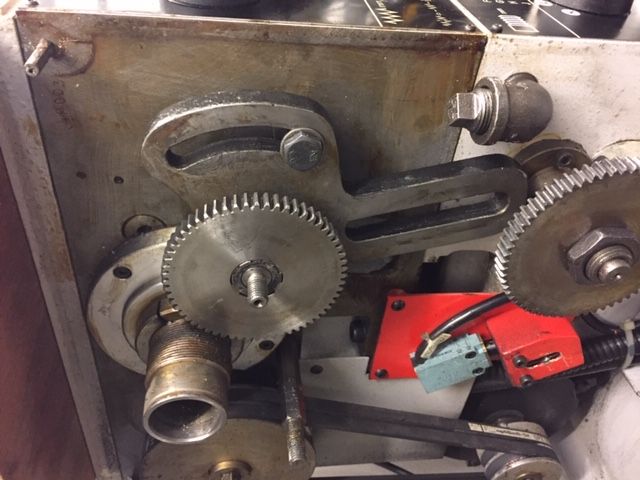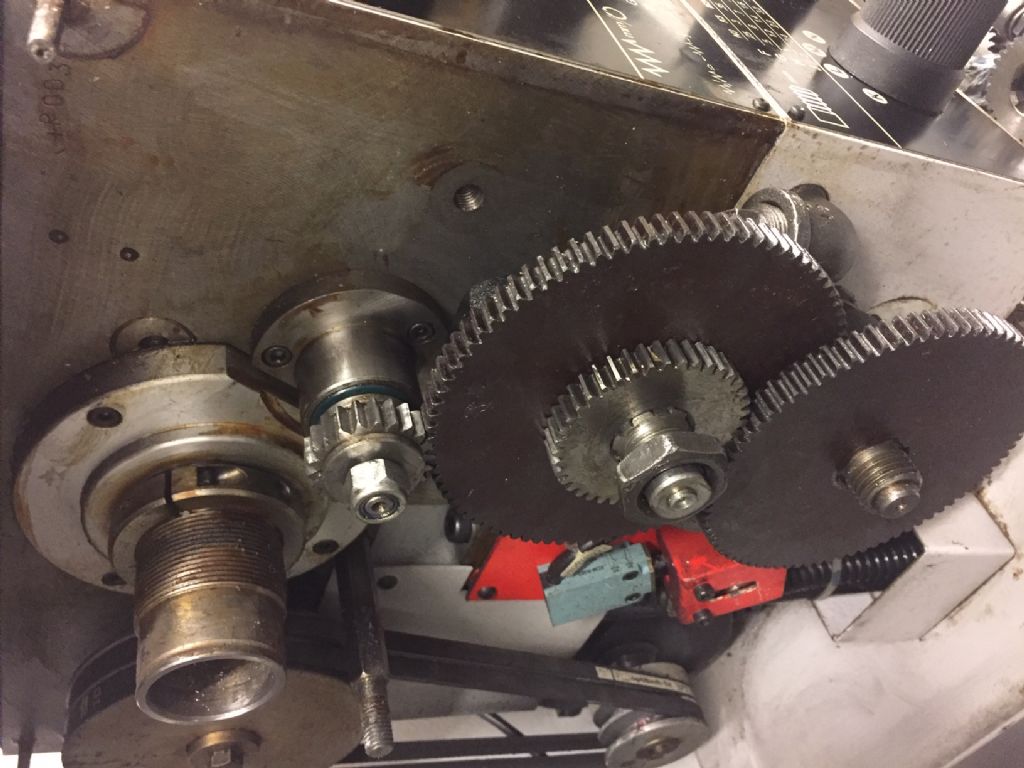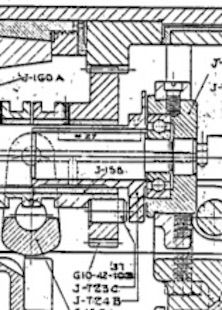James
Taper on the dogs won't work. Basically you are starting off with it half worn out.
Multi tooth dog clutches are different. Taper is basically there so the things will engage without needing excessive backlash for clearance. A single tooth clutch doesn't have the engagement issues beacue it inherently has most of a circles worth of backlash.
Taper form wear is a known failure issue in the P&W Model B system. Basically leads to the clutch not staying engaged at higher speeds and higher cutting loads. Which isn't good because not only does the single tooth clutch drive pretty much everything except the spindle on the B the machine itself is capable of removing metal at a very serious rate putting high loads on the dogs. Mine is OK but not in perfect health.
Taper also leads to inconsistent release position as the actual release drag loads vary more with change in cutting load. Ideally the drag on the dogs as the clutch triggers out of engagement should be independent of drive load. The P&W system uses short, stiff actuation levers and hefty spring loads for very positive actuation. Its also deep inside the headstock where it receives continuous lubrication so its operating under best possible conditions.
Being external Grahams (excellent) design will, relatively speaking, suffer more from dog drag variation because you cannot arrange continuous lubrication. The longer levers inevitably mean more spring in the system which reduces the sharpness of the disengage. Flip side is that Grahams system is engineered for lighter machines so loads will be lighter and its not so fundamental to machine operation as it is on my P&W where the third rod control operates the dog clutch so it gets used for everything.
Ideally you'd briefly pause the drive as the clutch actuates so the drive train briefly overruns the spindle by a fraction of a degree minimising drag at the point of shift. Which is impractical without serious electronics.
Grahams design is what it is and works well. Trying to guild the lily leads you straight down a rabbit hole of needless difficulties which, in the real world, make little if any difference. Might be interesting to see the effect of a serious anti friction coating on the dogs would be, eg DLC, but I'm betting you'd hardly notice.
About the only realistic way to improve on Grahams concept is to use an externally powered actuator, motorcycle quick shifter perhaps, and operate it electronically by picking off a control feed from a DRO system. Unfortunately nobody makes a DRO with a suitable control output. Which is a pity because using a trigger at zero output in conjunction with the offset memories, mine has 99 of the things, would make a very flexible bed stop system.
Clive
Graham Meek.


